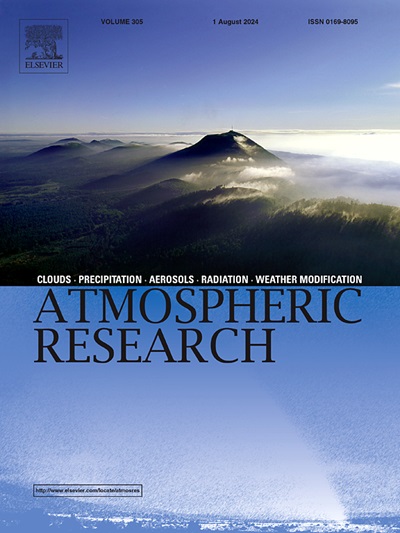全球陆地季风区降雨季节性变化及其潜在气候原因
IF 4.4
2区 地球科学
Q1 METEOROLOGY & ATMOSPHERIC SCIENCES
引用次数: 0
摘要
降雨季节性的变化会对人口生计、农业生产和生态系统的可持续性产生深远影响。然而,降雨季节性的变化和相关的气候原因在很大程度上是不清楚的,特别是在全球陆地季风区。在此基础上,利用可解释机器学习和多元小波相干性方法,分析了1960-2022年全球降水季节变化,探讨了全球气候遥相关(CTs)对全球陆地季风区降水季节变化的可能影响。结果表明:南亚东北部、南美洲东北部、北非南部和南非季风区大部分地区降水季节性显著减弱,南亚南部、北非北部和南美洲西南部季风区降水季节性显著增强;在1960-2022年期间,所有热点地区的降雨季节性也经历了突变。我们还发现,在这些热点地区,许多ct与降雨季节性呈非单调相关,使用可解释机器学习,解释降雨季节性变化的关键ct在不同热点地区有所不同。在一定尺度上,在不同时期,关键温度对降雨季节性的耦合影响也很显著。然而,自20世纪90年代以来,关键ct发生了变化,对几乎所有热点地区降雨季节性的影响都更强。本研究结果为提高农业生产力、促进生态系统可持续性和促进水资源管理提供了强有力的科学基础。本文章由计算机程序翻译,如有差异,请以英文原文为准。
Rainfall seasonality changes and underlying climatic causes in global land monsoon regions
Changes in rainfall seasonality can have far-reaching impacts on the livelihood of population, agricultural production, and ecosystem sustainability. However, the changes in rainfall seasonality and associated climatic causes are largely unclear, especially in global land monsoon regions. Here, we analyzed the variations of rainfall seasonality during 1960–2022, and explored the possible effects of global climate teleconnections (CTs) on rainfall seasonality changes in global land monsoon regions using interpretable machine learning and multivariate wavelet coherency method. The results show that rainfall seasonality weakens significantly in northeastern South Asian, northeastern South American, and most parts of southern North African and South African monsoon regions, but enhances significantly in southern South Asian, northern North African, and southwestern South American monsoon regions. Rainfall seasonality also experiences an abrupt change in all hotspots during 1960–2022. We also find that many CTs are nonmonotonically related to rainfall seasonality in these hotspots, and the key CTs that explain the variations in rainfall seasonality differ across different hotspots using interpretable machine learning. The coupled influences of the key CTs on rainfall seasonality are also significant at certain scales during different periods in these hotspots. However, the key CTs have undergone changes, with stronger impacts on rainfall seasonality in almost all hotspots since 1990s. The findings of this study offer a robust scientific foundation that significantly contributes to enhancing agricultural productivity, fostering ecosystem sustainability, and promoting water resources management.
求助全文
通过发布文献求助,成功后即可免费获取论文全文。
去求助
来源期刊

Atmospheric Research
地学-气象与大气科学
CiteScore
9.40
自引率
10.90%
发文量
460
审稿时长
47 days
期刊介绍:
The journal publishes scientific papers (research papers, review articles, letters and notes) dealing with the part of the atmosphere where meteorological events occur. Attention is given to all processes extending from the earth surface to the tropopause, but special emphasis continues to be devoted to the physics of clouds, mesoscale meteorology and air pollution, i.e. atmospheric aerosols; microphysical processes; cloud dynamics and thermodynamics; numerical simulation, climatology, climate change and weather modification.
 求助内容:
求助内容: 应助结果提醒方式:
应助结果提醒方式:


